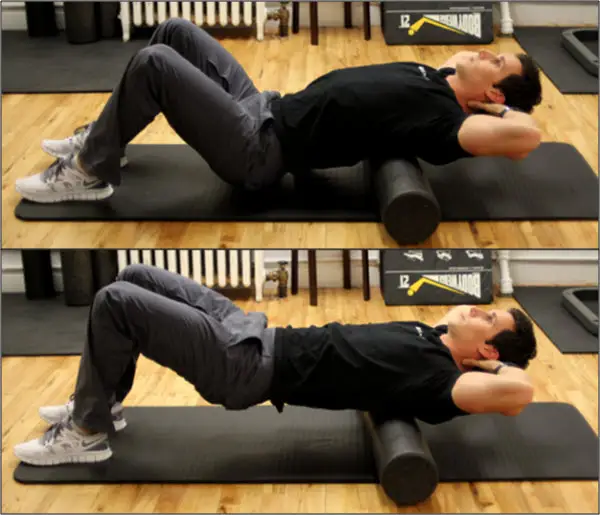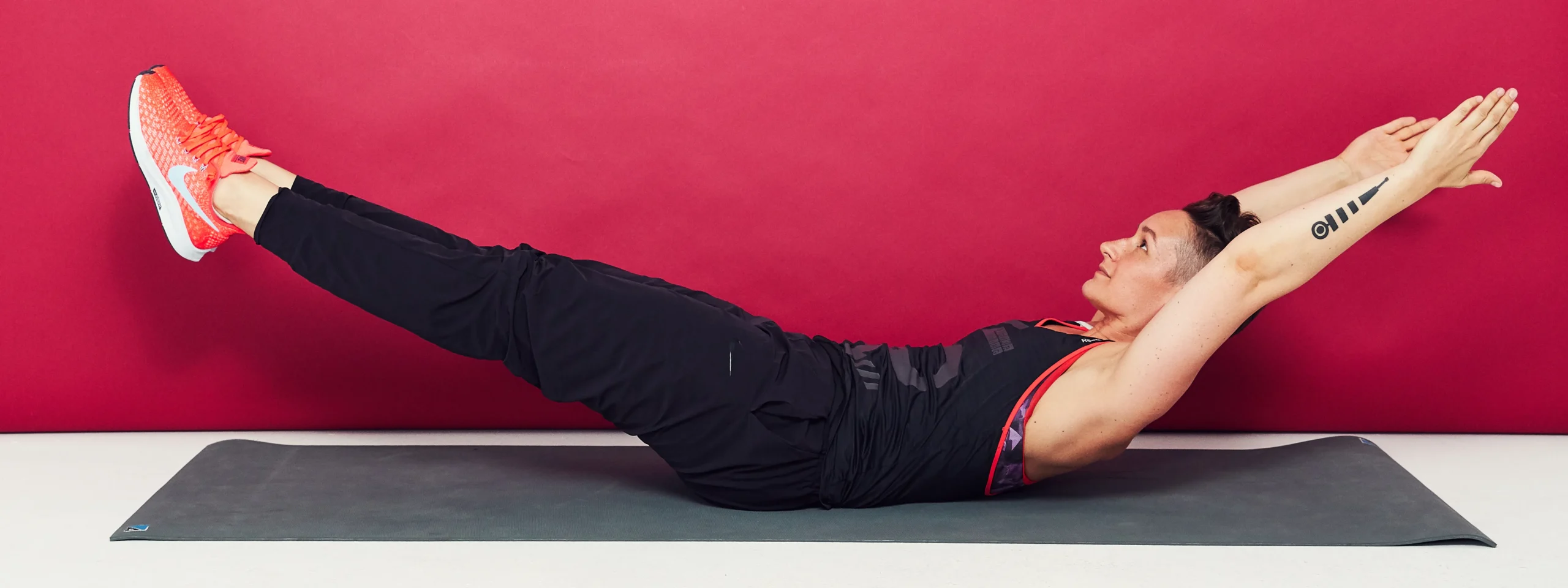Table of Contents
Exercise Daily – We all know that good posture is key for maintaining a healthy back, but it’s not always easy to adjust our own back in the right way. In this blog post, we will outline five ways you can adjust your own back in order to achieve good posture. How to Adjust Your Own Back in 5 Ways easy and simple exercises. From sitting up straight to bending at the knees, read on to learn how to adjust your own back in the right way.
Many people wonder if you can do this without chiropractic services. This looks interesting as it can reduce time, cost, and inconvenience if we leave our homes. It is however not necessary or appropriate for anyone to attempt self-corrected spinal misalignment. Although the above article doesn’t describe adjusting back pain without a chiropractic practitioner, it will discuss the risks and provide useful tips for improving your spine posture and supporting healthy spine alignment. There can be a lot of problems if one tries to align his back independently.
When someone cracks their back, sudden agitation causes air pockets in the synovial fluid to respond to a popping or crackling sound. Even a slight back crack may sound good but can cause serious injury and may not address the possible causes. If you are having pain in your spine, you may want to consult a medical provider immediately. For some people who experience occasional pain, a crack in the back could help temporarily ease their pain. This stretch may relieve tightness and cause crankiness in a lot of people.

How to Adjust Your Own Back in 5 Ways
There are a lot of ways to adjust your own back in 5 basic steps.
- Get comfortable. You should be in a relaxed position with your spine straight and your head, neck, and shoulders aligned directly over your hips.
- Position yourself so that you can see the area you need to adjust. This might mean turning your body so that you are looking in a different direction or propping yourself up on one arm or leg while you adjust.
- Extend your arms and legs out to their full range of motion, then press down into the ground to activate your core muscles (abs, glutes, etc.). Use your fingertips or palms to feel for any tight spots or kinks in the skin on your back.
- Use gentle pressure where needed and reposition as needed until you feel relief. Remember: The goal is not to force anything but to find what feels best for you!
- Repeat steps 2-4 if necessary until you’re satisfied with the results.
1. Correcting Posture
If you find that your back is always hurting, particularly in the morning, it might be something as simple as slouching or having poor posture. Here are five ways to adjust your own back in ways that will help:
- Sit up straight In order to keep your spine flexible, sit up tall and maintain a neutral spine position from head to toe. Place one hand on your stomach and the other hand on your chest in order to help keep your upper body still.
- Stretch Your Upper Back Before sitting down, stretch your upper back with gentle movements by leaning backward and lifting your arms overhead. Hold for 30 seconds before repeating the stretches on the other side.
- Use an E-Reader Stand If you want to read while seated, try using an e-reader stand instead of a chair. This will help you maintain good posture and correct any spinal problems that may have arisen from slouching while reading.
- Use a Wall Hanger To Keep Yourself From Sagging When Sitting Down If you find yourself sinking down into a chair after sitting for a prolonged period of time, use a wall hanger to prop yourself up instead. You can also use this same strategy if you’re standing at a desk or countertop for long periods of time without moving around much.
- Get Some Exercise Regular exercise can also help improve back health by stretching and strengthening muscles throughout your body including the spine.

2. Strengthening Your Back Muscles
If you’re looking for a way to strengthen your back muscles and get relief from pain, you can adjust your own back in ways that work for you. The spine is an incredibly flexible structure, so there are many different ways to adjust it to get the desired results. Here are four tips for adjusting your own back:
1. Use a foam roller on your lower back: Place the foam roller on the floor next to where you’re sitting or lying down, and roll it towards your spine until you feel a light warmth or tingling sensation. Roll the muscle groups below your lower back one at a time, using slow, circular motions. You also see Exercises To Get Rid Of Knee Fat:
2. Use a strap: Loop one end of the strap around a post or sturdy chair leg and drape the other end over your shoulder. Lean forward until you feel the tension in the strap and then pull back until you feel Relief. Hold for 30 seconds to 1 minute before releasing. Repeat on all sides.
3. Adjust your pillow: Place a pillow between your thighs so that it supports most of your body weight, and then lean backward until you feel Relief in your back muscles. Hold for 30 seconds to 1 minute before releasing.
4. Use a rolled-up towel: Sit up tall with your legs flat on the ground and arms by your side like you would do when getting out of bed—and roll up a towel so that it’s about twice as wide as.

3. Correcting the Hunchback Curve
If you’ve been living with a curved spine for years and have tried every stretch, exercise, and back-cleaning routine under the sun, it might be time to get a second opinion. A recent study published in the British Journal of Sports Medicine found that up to one-third of people may have a hunched back, which can lead to lower back pain, neck pain, headaches, and other issues.
There are several ways to correct the hunchback curve and improve your overall back health:
1. Adjust your sitting position: If you spend a lot of time hunched over at work or sitting in front of the TV, try sitting up tall with your feet flat on the floor and shoulder-width apart. This will help reduce tension in your neck and spine. You can also try using a cushion or stack of books to prop yourself up while you’re watching TV or working on the computer.
2. Strengthen your core: A strong core helps support your spine as you move throughout your day. By incorporating exercises such as Pilates or yoga into your daily routine, you can strengthen your abdominal muscles and prevent lower back pain from developing in the first place.
3. Get moving: Even if you don’t experience chronic pain, regular exercise can help improve posture and relieve stress from factors such as job stressors or lack of sleep. engage in activities such as walking, hiking, swimming, or cycling for 30 minutes each day to help.

4. Improving Your Core Stability
If you’re looking to improve your core stability, you can do a few things on your own. Most of these exercises require some basic equipment such as a Stability Ball, Resistance Band, or Swiss Ball.
- Lie down on your back on the floor and place the Stability Ball at the base of your spine. Keep your feet flat on the ground.
- Place one arm over your head and use the other hand to press down into the ball as far as you can while keeping your abdominal muscles contracted. Hold for 30 seconds to 1 minute.
- Switch arms and repeat.
- Slowly raise your hips off the ground and hold for 10 seconds before lowering them back down again. Do this six times per side.
- Stand up with the ball held between both hands and walk forward until it feels like it’s about to fall from your hands (don’t worry – it will eventually!). Keep your abs engaged throughout the entire movement. Hold for 10 seconds before slowly returning to starting position and repeating six times per side.

5. Knee-to-Chest Stretch
A flexion between the knees is a good way to strengthen the back muscle. It is possible for anyone to perform this exercise as a knee-to-chest stretch a knee-to-chest stretch a knee-to-chest stretch or a knee stretch with a knee in. It is very variable. Beginners will start by doing one stretch of one foot to the knee. It can also be done in partial sitting positions where one can do knee-to-ankle stretches without using the fingers. This can be done by using two stretch techniques: one knee-to-chest stretch. It can help to reduce fats in the belly. You can see more guides on, How To Reduce Fat On The Thigh.

Conclusion
Adjusting your own back in 5 ways can help ease any pain and discomfort you might be experiencing. If you’ve ever experienced back pain, or if it’s been bothering you for a while but you can’t seem to find a solution, read through these tips and see which one applies to your specific situation. With the proper guidance, adjusting your own back should become much easier.






